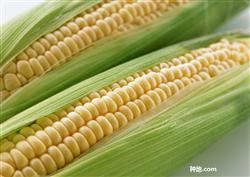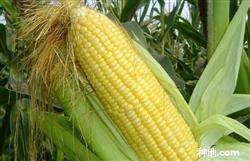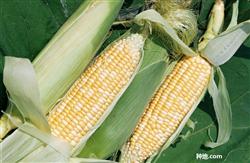How to grow fruit and corn?

How to grow fruit and corn? Please introduce thank you fruit corn is a kind of sweet corn suitable for eating raw. Compared with ordinary sweet corn, its main characteristics are thin skin, juicy, crisp and sweet. It can be eaten raw or cooked. There is no essential difference between fruit corn and sweet corn, general sweet corn can be eaten raw, but there are good and bad taste, good taste is used as fruit corn by people. Compared with previous varieties, the newly developed new varieties of fruit and corn are especially suitable for raw food, with unique taste, rich fruit flavor, thin skin without residue, delicate taste, fresh and tender, soft, sweet, juicy, crisp, tender and sweet, and so on. The sugar content is 10 times higher than ordinary corn and about 5% higher than watermelon, and the market prospect is very promising. According to relevant common sense, eating some raw grains, melons, fruits and vegetables can greatly reduce the loss of food nutrients, improve the body's ability to absorb protein, vitamin c, e and enzymes, enhance human immunity and improve disease resistance. at the same time, it also enriches the dining table of the citizens. The cultivation characteristics of sweet corn (1) the grain of sweet corn is thin, the ability of top soil is poor, and the seedlings are weak. (2) the sugar content of sweet corn was the highest in the milky stage and the suitable harvest time was short. the sugar content of common sweet corn was the highest at about 20 days after pollination, and then decreased rapidly. Sweet corn harvests fresh ears and tender grains, and special attention should be paid to the suitable harvest time, which should be harvested when the grain sugar content is the highest. (3) the sugar content of sweet corn decreased after pollination, and the same type of sweet corn pollen pollination could keep the high sugar content of grain. If the flour is strung with ordinary corn, the sugar content in the grain will decrease immediately and the commodity value will decrease. (4) serious diseases and insect pests. Sweet corn plants have high sugar content and are easy to be harmed by pests. And compared with other types of corn, it is most susceptible to ear rot. Compared with common corn, the growth and development characteristics and production purpose of sweet corn are not the same. In order to obtain high quality and high yield, we should pay attention to the following key technologies. The main results are as follows: (1) if the road varieties are mainly young ears for fruits and vegetables, the super sweet corn varieties should be selected, while for the canned products, the ordinary sweet corn varieties should be selected, and the qualified varieties should be selected according to the ear size and weight required by the manufacturers. And pay attention to the collocation of early, middle and late maturity, and constantly provide raw materials for the market and processing plants. (2) strict isolation to prevent the sweetness of sweet corn from being controlled by recessive genes. If ordinary corn or different types of sweet corn bunched with flour, it will produce the phenomenon of direct feeling of pollen and become ordinary corn and lose its sweetness. Therefore, sweet corn should be strictly isolated from other corn, generally more than 300 meters apart. If the spatial distance is not easy to arrange, you can also use obstacles such as villages, woods and hills for isolation, and you can also use staggered sowing, with an interval of more than 30 days in spring and more than 20 days in summer. When sowing, we should also strictly prevent the mixing of a small number of ordinary corn seeds. If common corn is mixed into sweet corn, ordinary corn will grow strong and have a large amount of pollen. If it is not removed in time, the quality of sweet corn will be greatly reduced, and it can not even be sold as sweet corn. (3) timely sowing and fine sowing sweet corn belong to vegetable crops, and the off-season harvest can greatly improve the economic benefit. Therefore, it is important to determine the sowing date according to market and climatic conditions. For example, plastic film mulching can be carried out at the end of March or early April in the Huang-Huai River Basin. Sowing in stages can also be carried out to prolong the time of market supply. For canned sweet corn, the sowing time should be arranged reasonably according to the processing capacity of the factory and the demand of the factory in different periods. The optimum temperature for sweet corn germination is 32-36 ℃. When the spring temperature is low, the germination days are increased and the germination rate is low. When the temperature is high, the germination days are reduced and the germination rate is high. In general, it takes 18-20 days to germinate at 13 ℃, 8-10 days at 15-18 ℃, and only 5-6 days at 20 ℃. It is generally believed that the temperature is stable through 13 ℃ and the ground temperature of 5 cm is above 11 ℃. The speed of sweet corn germination is also closely related to soil moisture. When the temperature is constant, when the soil moisture is in the range of optimum moisture, the more soil moisture, the faster the germination. (4) using fertilizer scientifically, grasping seedlings and attacking ears according to the study, under general production conditions, sweet corn can obtain higher yield and better quality by applying pure nitrogen 89kg, phosphorus pentoxide 5 ~ 6kg, potassium oxide 78kg per 666.7 square meters. Attention should be paid to the ratio of base fertilizer to topdressing. Organic fertilizer, phosphate fertilizer and potash fertilizer should all be used as base fertilizer, but too much nitrogen fertilizer as base fertilizer is easy to cause seed burning, usually only 50% of the total amount of nitrogen can be used as base fertilizer, and attention should be paid to seed fertilizer isolation. The time of topdressing should be divided into two stages according to the law of fertilizer demand of sweet corn, once before jointing, when there are 7 to 8 leaves, and the other about 10 days before heading, topdressing each uses the remaining 50%, which can promote the stalk to be stout, the ear large and the yield high. (5) strengthening management, timely prevention and control of diseases and insect pests. The function of inter-seedling is to prevent seedling and seedling from crowding each other, so as to promote individual development and firmness. The fixed seedling is actually the last inter-seedling, and it has influence on the density and strong seedling. Generally, it is suitable to plant 4-5-leaf time seedling, 6-7-leaf fixed seedling, and 3200-4000 seedlings planted with 667 square meters. Ploughing weeds and cultivating soil. Intertillage weeding has the function of raising soil temperature, conserving soil moisture and improving nutritional status. The principle of shallow, deep and shallow should be grasped (see back) when intertillage is weeding, shallow and middle tillage should be carried out in 4 leaves for the first time, usually 3 cm; about 10 cm deep in 8 leaves, and 3 cm after jointing, generally from jointing to heading, combined with weeding and light cultivation of soil for 2 times in order to enhance lodging resistance. Fork at the right time. Sweet corn is easier to produce bifurcations than ordinary corn. in order to promote the main stem ear to grow into a large ear and improve the commodity quality, it is necessary to make a fork under a certain density, which can not only supply nutrients to the main stem ear, but also improve the ventilation and light transmission conditions in the field. so as to increase the yield and output value. Cross the time should not be late, the first time in the beginning to grow bifurcations, 7-8 days later, hit again, except early, except small, do not hurt the main stem as the principle. Timely prevention and control of diseases and pests. Sweet corn is more susceptible to diseases and insect pests than other corn, which can easily lead to corn borer, beetles, aphids and other pests, and ear rot is particularly serious in the later stage. After the ear of sweet corn is damaged, the commodity quality and price are seriously affected. Therefore, the prevention of diseases and insect pests of sweet corn should be more important than early treatment, small treatment and treatment. First of all, we should pay attention to the selection of disease-resistant varieties, and then pay attention to control in the process of growth. The main underground pests of sweet corn in seedling stage are ground tiger and mole cricket. When sweet corn occurs seriously, there is a serious lack of plants and irregular growth of seedlings. The control of the ground tiger should be controlled at the peak stage of the second instar of the larvae, and it can be sprayed along the corn line with 1500 times of 80% dichlorvos. The main pest of sweet corn at heart leaf stage and ear stage is corn borer. The larvae enter the stalk and break the stalk or male ear, and drill into the ear to harm the grain, which will greatly reduce the marketability. Generally, it can be controlled for one or more times from the small trumpet stage to the big trumpet stage. In order to prevent residual poison, biological pesticides should be used as far as possible after sweet corn pollination, chemical pesticides should not be used or few chemical pesticides should be used, and highly toxic pesticides with long residual period should never be used. (6) to ensure the quality, the harvest time of sweet corn is quite different from that of ordinary corn. In addition to the sweet corn reserved for seed production to be harvested at the grain maturity stage, sweet corn for canned, quick-frozen and fresh ears should be harvested in the most suitable "taste" period (pre-milk stage). Because sweet corn grain sugar content is the most after pollination, harvest is too early, sugar content is low, ear is small, grain color is light, milk quality is less, flavor is poor; harvest is too late, although ear is large, yield is high, sugar content is decreased, starch content is increased, pericarp is hard, dregs are more, flavor is lower. Harvest time is difficult to grasp, generally 20-28 days after pollination is the highest sweetness period, but there are differences among varieties. With different sweet corn varieties, the suitable harvest time is also different. It depends on different varieties, and the harvest time varies from place to place. In Shanghai, common sweet corn should be harvested 23 days after pollination with a moisture content of 65%-67%, and 17-21 days after pollination in Huaiyin and other places in Jiangsu Province. The harvest of super sweet corn at 20-25 days after pollination is more suitable in Zhengzhou, Henan and other places. Generally speaking, the harvest time of sweet corn sown in spring is 17-22 days after pollination, and that in autumn is 20-26 days. In addition, the sugar content of sweet corn decreased rapidly after harvest, and the daily sugar content decreased by about 1.8%. Therefore, sweet corn should be processed in time after harvest, and points for attention are as follows: 1. Due to the low content of wrinkled starch in seeds, the top soil fertility is poor, sowing 5 seeds per hole. Grabbing sunny seeds for 1-2 days before sowing can increase the germination rate and germination potential of seeds. Sowing with plastic film mulching can be 10 to 20 days in advance, and the soil mulching after sowing is thinner than that of ordinary corn. The sowing depth is generally 2.5~5cm, the clay is shallower and the sandy soil is deeper. Light pressure after sowing is beneficial to seedling emergence. 2. The ground temperature stably passes through 12 degrees before sowing. 3. If different varieties are required to sow at the same time, space or time isolation should be carried out. Spatial isolation generally needs to be more than 300 meters apart from other corn, so as not to accept the pollen of other corn and affect the quality. The best time isolation is to stagger the sowing time with other corn for more than 20-25 days. 4. Pay attention to the timely harvest and finish the harvest in the suitable harvest period. 5. Sell in time, preferably no more than 72 hours. Please keep it at a low temperature. Click to get more corn planting techniques click to get more food crop planting techniques
- Prev

How to grow sweet corn?
How to grow sweet corn? Please guide the sweet corn with good palatability, soft and delicate taste, thick meat, thin skin and fragrant flavor. After fresh food harvest, green fruit ears can be sold directly in time or processed through quick freezing, vacuum packaging and other fresh-keeping processing, which can maintain the original shape, color, nutrition and quality, and go on the market every year. Mature.
- Next

How to grow fruit corn?
How to grow fruit corn? Please guide the fruit corn is a kind of sweet corn suitable for eating raw. Compared with the general sweet corn, its main characteristics are thin skin, juicy, crisp and sweet. It can be eaten raw or cooked. There is no essential difference between fruit corn and sweet corn, general sweet corn can be eaten raw.
Related
- The first cup of black tea in spring, the flavor and history of tea gardens in Kenya, Africa
- The computer can not only choose potatoes, but also grow tea rice. AI will grow winter oolong tea champion.
- It is not only the inflated tea bitten by insects, but also engraved with the four seasons tea in Beipu.
- The Oriental Beauty Tea Festival in Zhuxian County takes the stage at the weekend to experience the plus-size feast of oil tea.
- & quot; Oriental Beauty Tea & Exploration of Emei in Hsinchu, the hometown of quot;
- The new variety of strawberry "Tainong 1" dessert is the first choice with mellow aroma. Crimson gorgeous
- History of Tea in Taiwan: from Wild Inner Mountain to Export Tea Garden
- Two types of Taiwan Oriental Beauty Black Tea won the British three-Star Award for Childhood Tea Xiang Zhang Jiaqi changed from pilot to champion tea maker.
- Banana species and varieties: the planting history of Taiwan Xianren banana and dwarf banana is long, is banana disease resistant?
- Coffee planting Technology: Qianjie Coffee from Seedling to harvesting

